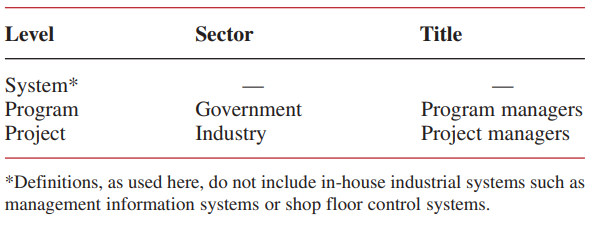In the preceding sections the word “systems” has been used rather loosely. The exact definition of a system depends on the users, environment, and ultimate goal. Business practitioners define a system as:
A group of elements, either human or nonhuman, that is organized and arranged in such a way that the elements can act as a whole toward achieving some common goal or objective.
Systems are collections of interacting subsystems that, if properly organized, can provide a synergistic output. Systems are characterized by their boundaries or interface conditions. For example, if the business firm system were completely isolated from the environmental system, then a closed system would exist, in which case management would have complete control over all system components. If the business system reacts with the environment, then the system is referred to as open. All social systems, for example, are categorized as open systems. Open systems must have permeable boundaries.
If a system is significantly dependent on other systems for its survival, then it is an extended system. Not all open systems are extended systems. Extended systems are everchanging and can impose great hardships on individuals who desire to work in a regimented atmosphere.
Military and government organizations were the first to attempt to define the boundaries of systems, programs, and projects. Below are two definitions for systems:
● Air Force Definition: A composite of equipment, skills, and techniques capable of performing and/or supporting an operational role. A complete system includes related facilities, equipment, material services, and personnel required for its operation to the degree that it can be considered as a self-sufficient unit in its intended operational and/or support environment.
● NASA Definition: One of the principal functioning entities comprising the project hardware within a project or program. The meaning may vary to suit a particular project or program area. Ordinarily a “system” is the first major subdivision of project work (spacecraft systems, launch vehicle systems).
Programs can be regarded as subsystems. However, programs are generally defined as time-phased efforts, whereas systems exist on a continuous basis. Projects are also time-phased efforts (much shorter than programs) and are the first level of breakdown of a program. A typical definition would be:
● NASA/Air Force Definition: A project is within a program as an undertaking that
has a scheduled beginning and end, and that normally involves some primary
purpose.
As shown in Table 2–4, the government sector tends to run efforts as programs,
headed by a program manager. The majority of the industrial sector, on the other hand, prefers to describe efforts as projects, headed by a project manager. Whether we call our undertaking project management or program management is inconsequential because the same policies, procedures, and guidelines tend to regulate both. For the remainder of this text, programs and projects will be discussed interchangeably. However, the reader should be aware that projects are normally the first-level subdivision of a program. This breakdown will be discussed in more detail in Chapter 11.

Once a group of tasks is selected and considered to be a project, the next step is to define the kinds of project units. There are four categories of projects:
● Individual projects: These are short-duration projects normally assigned to a single individual who may be acting as both a project manager and a functional manager.
● Staff projects: These are projects that can be accomplished by one organizational unit, say a department. A staff or task force is developed from each section involved. This works best if only one functional unit is involved.
● Special projects: Often special projects occur that require certain primary functions and/or authority to be assigned temporarily to other individuals or units. This works best for short-duration projects. Long-term projects can lead to severe conflicts under this arrangement.
● Matrix or aggregate projects: These require input from a large number of functional units and usually control vast resources.
Project management may now be defined as the process of achieving project objectives through the traditional organizational structure and over the specialties of the individuals concerned. Project management is applicable for any ad hoc (unique, one-time, one-of-a-kind) undertaking concerned with a specific end objective. In order to complete a task, a project manager must:
● Set objectives
● Establish plans
● Organize resources
● Provide staffing
● Set up controls
● Issue directives
● Motivate personnel
● Apply innovation for alternative actions
● Remain flexible
The type of project will often dictate which of these functions a project manager will be required to perform.
Source : Project management A system approach to planning, scheduling and controlling [EIGHTH EDITION] By HAROLD KERZNER, Ph.D.